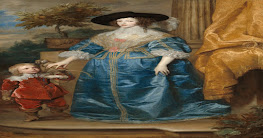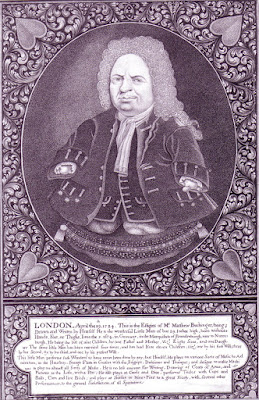Welcome to my latest blog post. Last week I discussed how witchcraft relates to deformity. This week I will be shifting my focus to the realm of court dwarfs. Perhaps the most famous example of a court dwarf was Jeffrey Hudson. Before I begin to tell his tale, I should probably clarify a few things regarding terminology. While I understand that the term dwarf can be offensive, I am using it because that is what the history books use. You can find out more about that in my post on disability as entertainment in Ancient Rome. You can also find out more about my attitude towards offensive language here.
The Court Dwarf
Jeffrey Hudson was born in 1619, in the county of Rutland, England. Fittingly, Rutland is the smallest county in England. Hudson’s family were poor, and they feared that Jeffrey’s height restriction would result in him being stuck in poverty forever. As strange as it may sound to us today, they were more than happy to release Jeffrey into the care of the Duke and Duchess of Buckingham. George Villiers, the Duke, was keen to gain the favour of the royal family and served Jeffrey in a pie to the queen!
I should probably rephrase that and explain it better. A pie was made 2 feet tall and 2 feet wide and presented to Henrietta Maria, the wife of Charles I at a 1626 banquet. This next part reminds me of that scene from 'Alien' as 7-year-old Jeffrey poked his hand through the crust and startled the queen. She then realised that it was a small child in a full suit of armour and was greatly entertained by the spectacle. She was delighted to hear that he was hers to keep and took him home with her.
I know it’s strange that he pretty much was her pet, but he and Henrietta Maria became close as he was always in her presence. Jeffrey Hudson was not the only unusual person in the royal court. There was also a Welshman called William Evans who was reportedly 7ft 6in tall. He had an act involving Jeffrey that was a real crowd pleaser. He pulled a loaf of bread out of one of his jacket pockets and from the other produced Jeffrey. I’m sure it was a sight to behold!
The English Civil War
In 1642 the English Civil War broke out between those who supported the crown, the Royalists, and those who opposed it, the Parliamentarians. Unsurprisingly, Henrietta Maria, being the king’s wife, was in favour of the crown. This also meant that Jeffrey Hudson had to support the king. I assume he would have anyway, given that he helped him escape poverty. Hmmm…. how to skip over the dull war bits and get back to Hudson’s role? Basically, it all became very nasty and in 1649 Charles I lost his head, literally. So that’s what happened in the war. I mean, much more happened but that doesn’t really concern me right now. While the war was going on (before the beheading), Hudson was not just sitting idly by. It is possible that he actually fought against the Parliamentarians at one point and was given the title ‘Captain of the horse’. It is clear that he was more than just a court dwarf.
All Downhill from Here
The tide of the war turned against the Royalists forcing Henrietta Maria and her entourage, including Hudson, to flee to France. It was here that Hudson’s life began to fall apart. Has anyone in history ever had a happily ever after, or is that just in fairy tales? Anyway, Jeffrey was fed up with people mocking him because of his height. This came to a head in October 1644, when he challenged Charles Crofts to a duel. Crofts was the brother of the queen’s master of horse, so he was deemed important. Jeffrey mounted his horse, gun in hand and charged towards Crofts who continued to mock him. It probably came as a shock then when the bullet Jeffrey fired lodged in Crofts’ brain, killing him instantly. So, killing someone usually doesn’t go down well, but matters were made worse for Hudson because duelling was illegal in France. Henrietta Maria had no option other than removing him from her court entirely.
Things only got worse from there. During his journey back to England he was captured by Barbary pirates and made a slave in North Africa for 25 years. Not much is known about this period of his life, but it can be assumed that he was harshly treated. We do know that he was back in Rutland when Henrietta Maria died in 1669. Phew! He escaped slavery, at least all his hardships were over. No! Apparently, there was still more to come. Upon returning to London, Hudson discovered that there was strong anti-Catholic sentiment and was thrown in jail after being recognised as the Catholic queen’s dwarf. He was eventually released and died forgotten around 1682.
It is fair to say that Jeffrey Hudson was not a typical court dwarf and his life had many ups and downs.
To keep up to date with my latest blog posts, you can like my Facebook page, or follow me on Twitter. You can find them by clicking the relevant icons in the sidebar.
Next time I will look at disability and kingship, or something along those lines.
The Wheelchair Historian
Further Reading
Dvorsky,George, ‘The true story of Sir Jeffery Hudson, the real-life Tyrion Lannister’, 10/01/13 12:50PM https://io9.gizmodo.com/the-true-story-of-sir-jeffery-hudson-the-real-life-tyr-1434495288 Accessed: 27th February 2021.
Harris, Marea, ‘Sir Jeffrey Hudson – Swashbuckling Court Dwarf Served in a Pie to a King’, Aug 22, 2018 https://www.thevintagenews.com/2018/08/22/sir-jeffrey-hudson/ Accessed: 27th February 2021.
National Portrait Gallery, ‘Jeffrey Hudson (1619-1682), Dwarf and favourite of Queen Henrietta Maria’ https://www.npg.org.uk/collections/search/person/mp02305/jeffrey-hudson Accessed: 27th February 2021.
Woolf, John, ‘The amazing life of Jeffrey Hudson, the queen’s dwarf’, Published: January 3, 2020 at 11:21 am https://www.historyextra.com/period/stuart/amazing-life-jeffrey-hudson-queen-henrietta-maria-dwarf/ Accessed: 27th February 2021.


